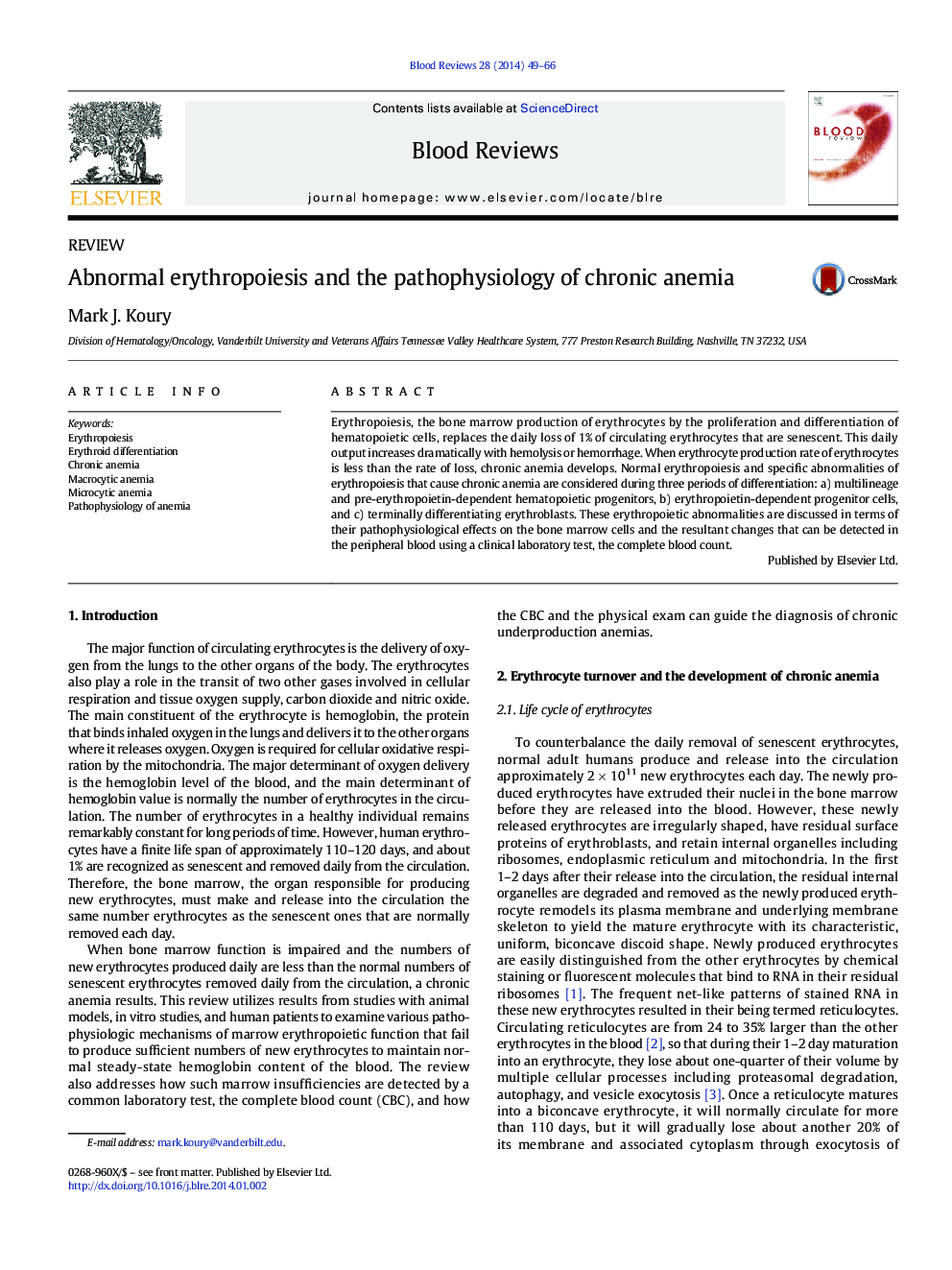| Article ID | Journal | Published Year | Pages | File Type |
|---|---|---|---|---|
| 2106153 | Blood Reviews | 2014 | 18 Pages |
Erythropoiesis, the bone marrow production of erythrocytes by the proliferation and differentiation of hematopoietic cells, replaces the daily loss of 1% of circulating erythrocytes that are senescent. This daily output increases dramatically with hemolysis or hemorrhage. When erythrocyte production rate of erythrocytes is less than the rate of loss, chronic anemia develops. Normal erythropoiesis and specific abnormalities of erythropoiesis that cause chronic anemia are considered during three periods of differentiation: a) multilineage and pre-erythropoietin-dependent hematopoietic progenitors, b) erythropoietin-dependent progenitor cells, and c) terminally differentiating erythroblasts. These erythropoietic abnormalities are discussed in terms of their pathophysiological effects on the bone marrow cells and the resultant changes that can be detected in the peripheral blood using a clinical laboratory test, the complete blood count.
